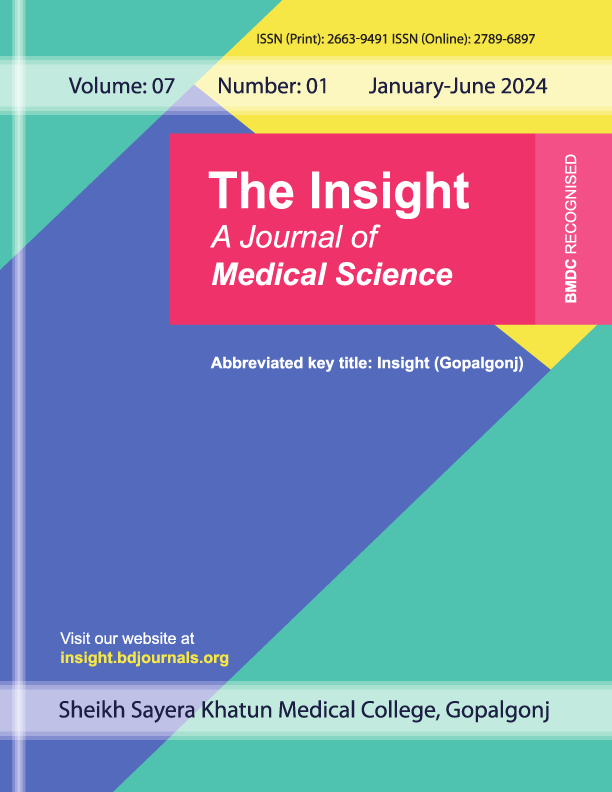Published 15-11-2024
Keywords
- Interdialytic Weight Gain (IDWG),
- Chronic Kidney Disease (CKD),
- Hemodialysis,
- Diabetes,
- Hypertension
Copyright (c) 2024 The Insight

This work is licensed under a Creative Commons Attribution 4.0 International License.
How to Cite
Abstract
Introduction: Chronic kidney disease (CKD) is a global health challenge, particularly in developing countries, where it strains healthcare resources. Affecting over 10% of the worldwide population, CKD is linked to non-communicable diseases like obesity, diabetes, and hypertension. Hemodialysis, a renal replacement therapy, extends life but has high morbidity and mortality rates. Aim of the study: The study aims to investigate the correlation between interdialytic weight gain and the length of hemodialysis treatment in diabetic patients. Methods & Materials: This prospective observational study was conducted in the Nephrology Department at Dhaka Medical College Hospital, Bangladesh, over 1.5 years (December 2021 to May 2023). It involved 109 adult diabetic patients undergoing twice-weekly hemodialysis for over three months, selected through purposive sampling. By the study's end, 92 participants remained, categorized into three groups based on dialysis duration. Result: The study analyzed 92 participants' interdialytic weight gain (IDWG) in terms of dialysis duration. The mean age was 45.86±14.10 years, with a male majority of 65.2%. Most participants (66.3%) had an IDWG greater than 4%, averaging 2.88±1.04, with gains ranging from 0.60 to 4.67. Conclusion: The study found a significant negative correlation between interdialytic weight gain (IDWG) and hemodialysis duration in diabetic patients. Longer hemodialysis sessions were linked to lower IDWG, indicating better fluid and diet compliance. With 66.3% experiencing significant IDWG, tailored interventions are needed to improve dietary habits and health outcomes, reducing mortality risk.



